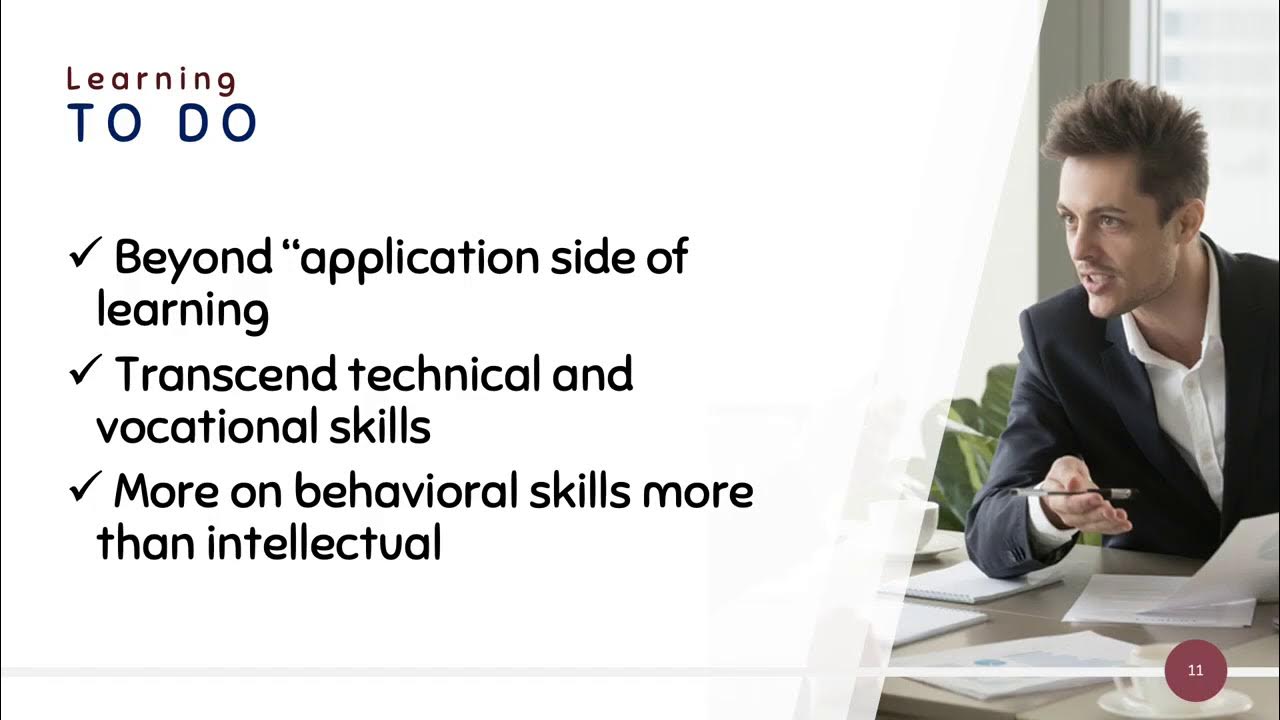Ultimate Goals of MTB-MLE based on the DepEd Framework (of MTB-MLE)
Summary
TLDRIn this educational session, J. Mary Asoy introduces the concept of Mother Tongue-Based Multilingual Education (MTB-MLE), emphasizing its significance in fostering lifelong learning and communicative competence. The discussion covers key theories by Del Hymes on effective communication and highlights the components of communicative competence, including grammatical and sociolinguistic skills. Asoy outlines the bridging process from L1 to L2 instruction and sets clear learning objectives for students, culminating in activities that encourage engagement with the Cebuano Visayan phonetic spelling system. Overall, the session aims to enhance appreciation for multilingual education and cultural diversity.
Takeaways
- 😀 The Mother Tongue (MT) is defined as the first language or native language of a child, essential for their education.
- 📚 Multilingual Education (MLE) incorporates both the mother tongue and additional languages in the learning process.
- 🌍 The ultimate goals of MTB-MLE include fostering lifelong learning and enhancing communicative competence.
- 🗣️ Communicative competence involves not only grammatical correctness but also social appropriateness in communication.
- 🔍 Del Hymes introduced the concept of communicative competence, emphasizing effective communication between language users.
- 🔧 Canale and Swain identified key components of communicative competence: grammatical, sociolinguistic, strategic, and discourse competence.
- 🎯 The learning area standards for MTB-MLE stress the effective use of the mother tongue in various communication contexts.
- 📊 Key stages in MTB-MLE occur at the end of grades 3, 6, and 10, with specific competencies expected at each stage.
- 🚀 The bridging process allows for a gradual transition from learning in the mother tongue to incorporating second languages.
- 🔤 The transcript emphasizes the significance of understanding and appreciating cultural heritage through language learning.
Q & A
What does MTB-MLE stand for?
-MTB-MLE stands for Mother Tongue-Based Multilingual Education, which involves using the mother tongue as the primary medium of instruction while incorporating additional languages.
What are the ultimate goals of MTB-MLE discussed in the lesson?
-The ultimate goals of MTB-MLE include promoting lifelong learning and developing communicative competence among learners.
Who introduced the concept of communicative competence and when?
-Dell Hymes introduced the concept of communicative competence in 1966.
How does Hymes' definition of communicative competence differ from Chomsky's?
-Hymes defined communicative competence as the ability to communicate effectively and appropriately in social contexts, whereas Chomsky focused primarily on grammatical correctness.
What are the four components of communicative competence as outlined by Canale and Swain?
-The four components are grammatical competence, sociolinguistic competence, strategic competence, and discourse competence.
What is the significance of the bridging process in MTB-MLE?
-The bridging process refers to the transition from learning one language to another, emphasizing the gradual introduction of a second language while using the mother tongue as the initial medium of instruction.
What are the two types of transition mentioned in the lesson?
-The two types of transition are early exit transition, where L1 is used for the first 2-3 years, and late exit transition, where L1 is used for 5-6 years or more before switching to L2.
What is expected of students by the end of grade 3 in terms of communication skills?
-By the end of grade 3, students should be able to communicate in their first language on familiar topics, understand and read L1 texts with comprehension, and create their own stories.
What assignments were given to students at the end of the lesson?
-Students were assigned to summarize the video discussion in five sentences, explain specific terms in their own words, and research the Cebuano Visayan phonetic spelling system with ten examples.
How does the lesson emphasize the importance of multilingual education?
-The lesson emphasizes that multilingual education not only supports cognitive and academic development but also fosters cultural appreciation and effective communication in diverse contexts.
Outlines

Cette section est réservée aux utilisateurs payants. Améliorez votre compte pour accéder à cette section.
Améliorer maintenantMindmap

Cette section est réservée aux utilisateurs payants. Améliorez votre compte pour accéder à cette section.
Améliorer maintenantKeywords

Cette section est réservée aux utilisateurs payants. Améliorez votre compte pour accéder à cette section.
Améliorer maintenantHighlights

Cette section est réservée aux utilisateurs payants. Améliorez votre compte pour accéder à cette section.
Améliorer maintenantTranscripts

Cette section est réservée aux utilisateurs payants. Améliorez votre compte pour accéder à cette section.
Améliorer maintenantVoir Plus de Vidéos Connexes

4 Pillars of Education

MK Prinsip Pengukuran Kimia - Spektroskopi Rotasi Murni

How to Add, Subtract, Multiply, and Divide Decimals | A Review of Decimals | Math with Mr. J

1 An introduction to vectors

Greatest Common Factor | How to Find the Greatest Common Factor (GCF)

Subtracting Fractions with Unlike Denominators | Math with Mr. J
5.0 / 5 (0 votes)
